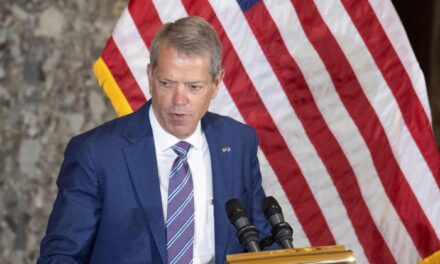We support our Publishers and Content Creators. You can view this story on their website by CLICKING HERE.
The Environmental Protection Agency said the rules help to prevent exposure among farm workers and their families, as well as neighboring communities.
The U.S. Environmental Protection Agency (EPA) has restored Obama-era measures aimed at protecting people from pesticide exposure on and around farms, it has announced.
The measures, published in a final rule on Oct. 2, restore the pesticide Application Exclusion Zone (AEZ) requirements established under the 2015 Agricultural Worker Protection Standard (WPS).
Those requirements state that exclusion zones—areas in which bystanders are prohibited from entering while pesticides are being sprayed—must be extended to a 100-foot radius when pesticides with fine droplets are being sprayed.
In instances where medium or larger droplets are sprayed from a “height greater than 12 inches from the soil surface or planting medium,” a 25-foot radius makes up the exclusion zone, according to the reinstated rules.
The exclusion areas may also extend outside of an agricultural area to include school grounds and residential neighborhoods, according to the requirements, which note that such exclusion zones only exist when the pesticide is being applied and move with the spraying equipment during application.
The final rule also provides “flexibilities” for family farms without compromising protections, the EPA said.
“Farmworkers help to provide the food we feed our families every day and it’s EPA’s job to keep them safe from pesticides,” said Assistant Administrator for the Office of Chemical Safety and Pollution Prevention Michal Freedhoff. “No one should be at risk from pesticide-related illness because of their job or where they live.”
Biden Admin Delivering ‘Environmental Justice’
Freedhoff called the EPA’s rule “another significant step by the Biden–Harris Administration to protect public health and deliver on environmental justice.”
The regulation also requires farmers to immediately stop spraying pesticides if anyone enters the AEZ. It also states that employers must ensure their workers follow the requirements and ban them from allowing workers to enter an AEZ.
President Barack Obama made revisions to the WPS in 2015 as part of efforts to protect individuals from pesticide exposure and limit incidents of pesticide-related illness.
Those changes were welcomed by the pesticide industry but quickly became the subject of a lawsuit filed by multiple environmental groups including Farmworker Justice and Earthjustice and were ultimately blocked.
The EPA’s final rule reinstates several provisions under the 2015 WPS and includes two revisions that the EPA said “provide clarity and flexibility for growers and farming families without increasing risk to farmworkers and bystanders.”
These revisions include allowing farm owners and their immediate families to remain inside enclosed structures or homes during pesticide application. They also clarify that suspended pesticide applications can only resume once people have left the AEZ.
The EPA’s new rule will be effective within 60 days of publication on the federal register.
Additionally, the agency said it will release interim guidance before the end of October to support farmers in complying with the new rule.
The agency will accept feedback on how to improve the guidance after its release, it said.

 Conservative
Conservative  Search
Search Trending
Trending Current News
Current News 







